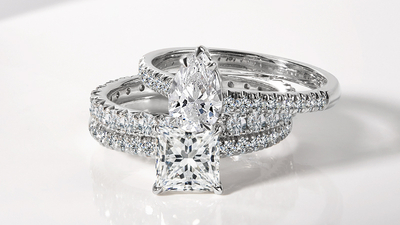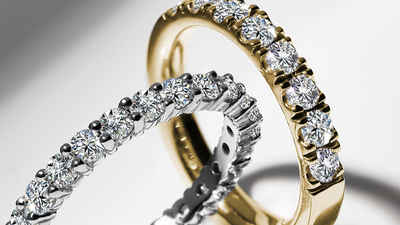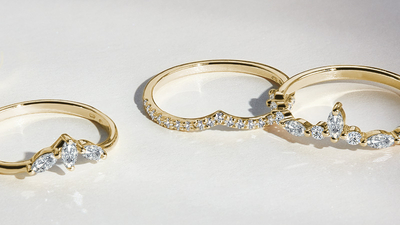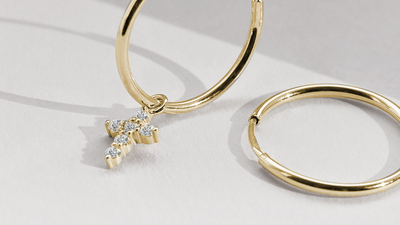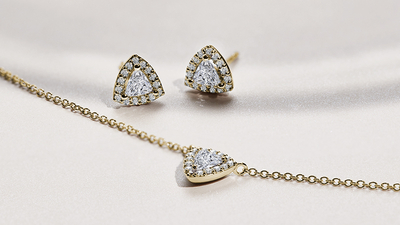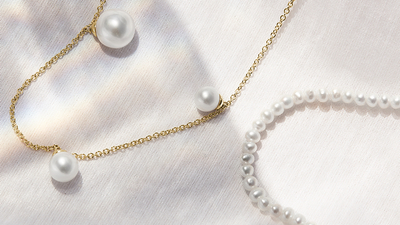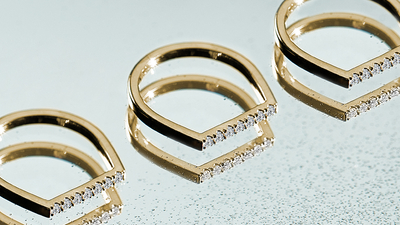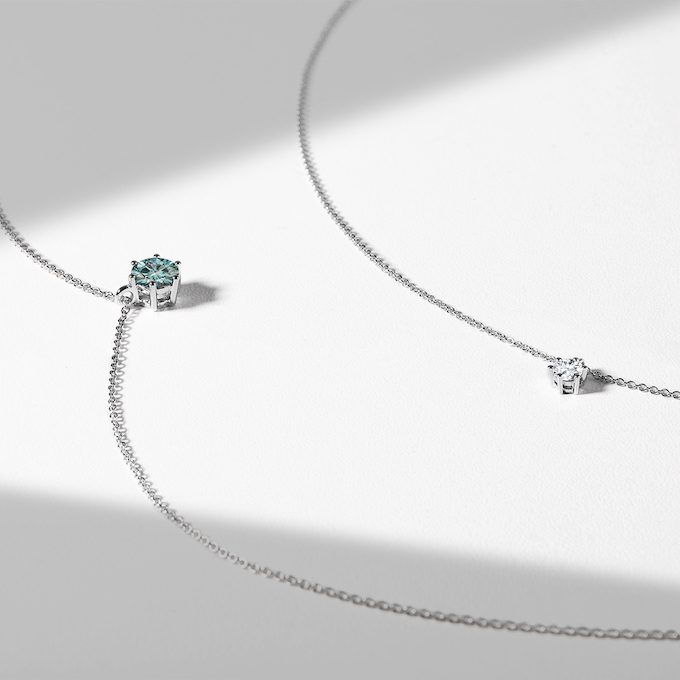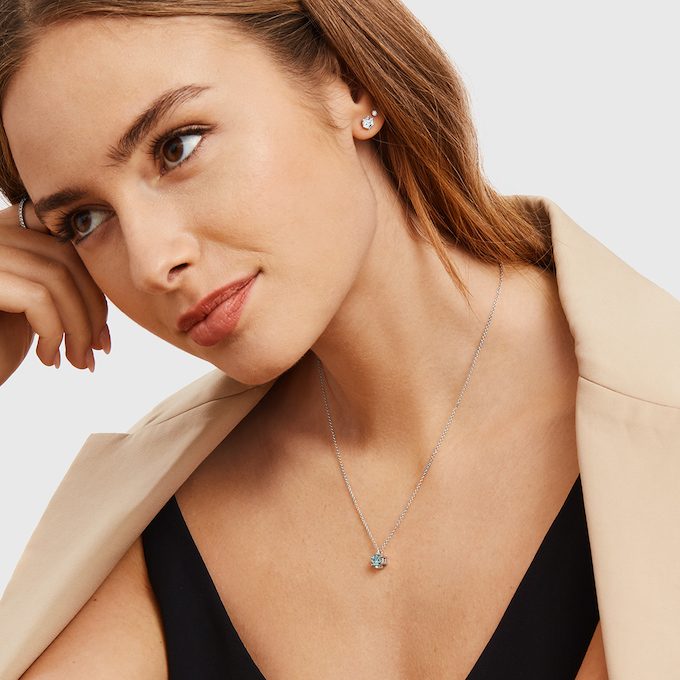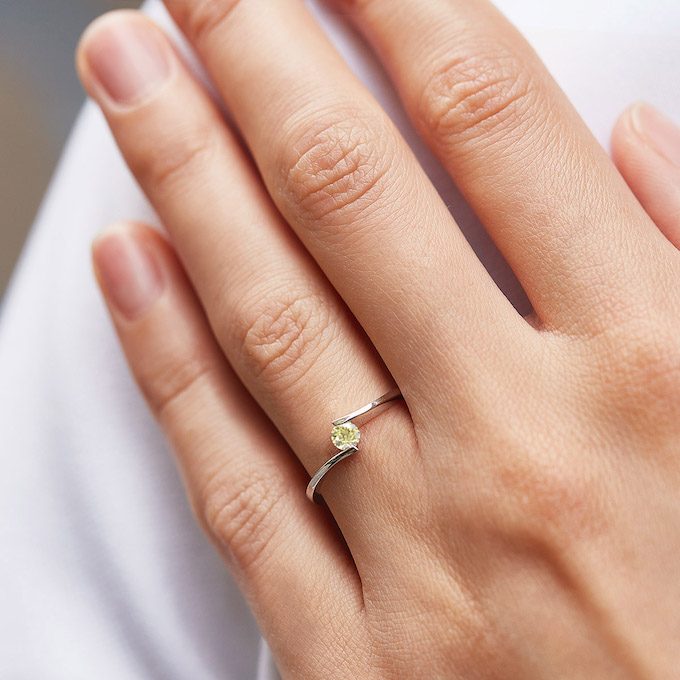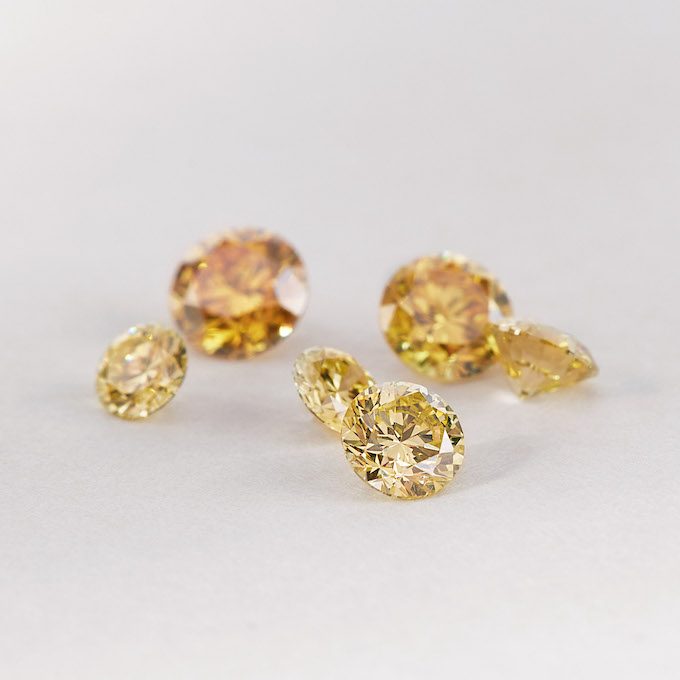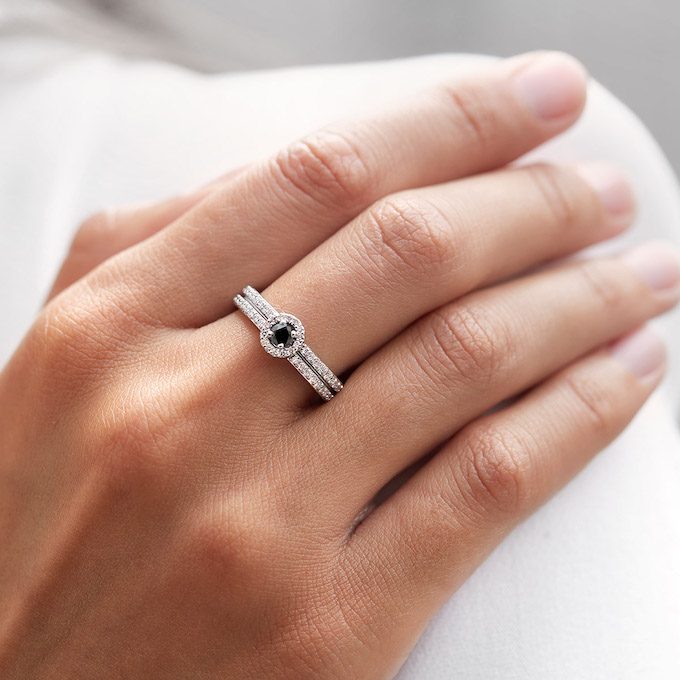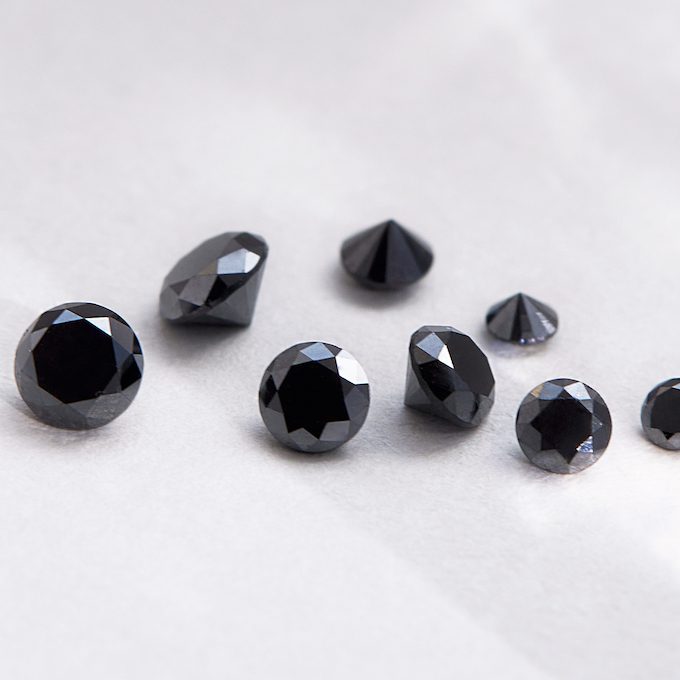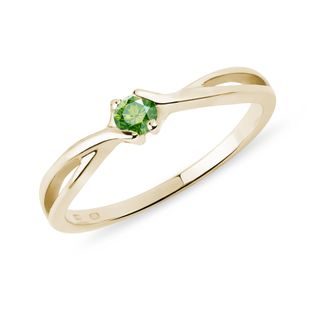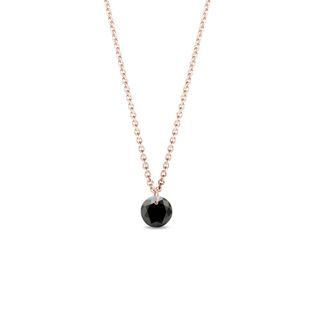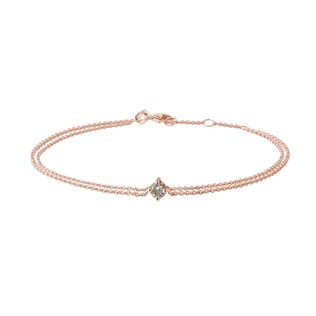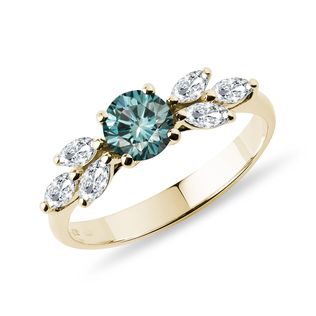Color diamonds - extremely rare and beautiful, created by Mother Nature and ready to shine in meticulously created jewelry. They are among the rarest of objects on our planet and can be considered a niche area in the diamond market. Their wide variety of colors which may even include all the conceivable shades of colors are especially bewitching.
Color diamonds in KLENOTA jewelry
Natural sparkling color diamonds are a real rarity - they are extremely expensive, even when it comes to stones in small sizes. However some of the diamonds which are mined can have a very faint, indistinct color or they might have small scrapes or scratches on them. In order for their beauty to stand out fully, we can highlight or fill out the color of the stones and such color diamonds are then called “treated”. We also offer treated diamonds at the KLENOTA jewelry studio. These stones have all the desired properties of diamonds - beautiful luster, hardness and vibrant colors however as compared to natural diamonds, they are more affordable.
In our KLENOTA collection of jewelry with color diamonds, you will find unique pieces that will please every woman. Color diamonds are an original gift because they are rare and their color brings out the personality of the wearer.
At our jewelry studio, we set them into white, yellow and rose gold. We pay a great deal of attention to every piece of jewelry we produce - and you can tell this just by looking at it. If you are unsure of what to choose, come by our studio where an experienced gemologist will help you and also advise you on how to take care of your jewelry.
The history of color diamonds
The first system of classifying diamonds by color dates back to 6th century India and it was associated with the caste system. Diamonds served as a symbol of social standing there. Members of the highest caste of priests and Brahmins were allowed to wear diamonds "the whitest of the conch, the lotus, or rock crystal," in other words white or colorless diamonds. The landowners and warriors could wear "brown color of the eye of the hare" diamonds. The third caste, which included merchants could only have diamonds which were a "pretty nuance of a petal of a kadl", ie yellow flowers, and the lower castes were assigned diamonds with "the sheen of a burnished sword", ie gray or black. Kings however were free to wear diamonds of all colors. Today, the grading system for diamonds is less poetic but much more sophisticated. Even a slight difference in tone can mean a huge difference in the final price of the stone. Some color diamonds have managed to go down in history as the most expensive gemstones in the world such as for instance the famous Hope blue diamond.
All the colors of the rainbow
Color diamonds are a real rarity in nature. This is evidenced by the fact that they make up only 0.1% of the world’s diamond production. Why this is the case is best explained by a small excursion into the world of chemistry. A colorless diamond is the only precious stone that consists of only one element, which is carbon. Its atoms are connected by relatively strong bonds in a regular crystal lattice. But the real alchemy begins when other chemical elements or other factors affecting color come into play. Diamonds then come in all colors. These are called “fancy” color diamonds or just fancy diamonds for short.
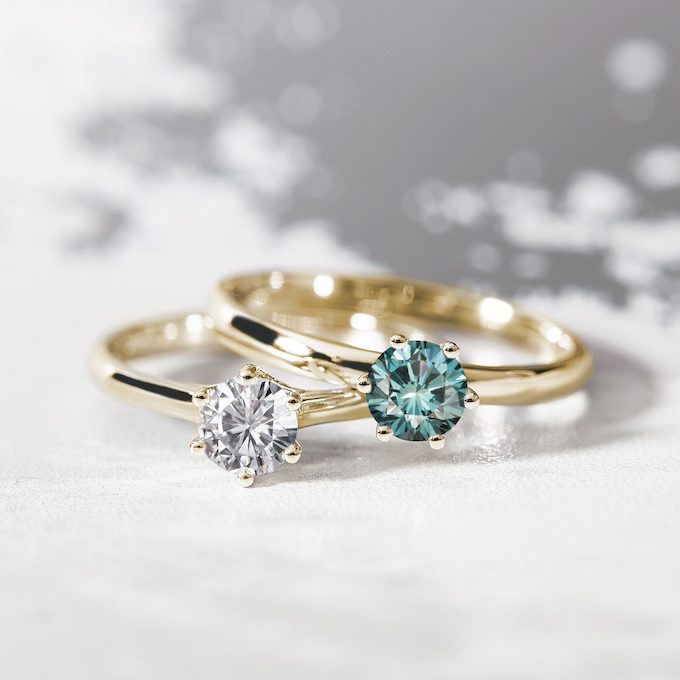
Categories and ratings of color diamonds
With colorless diamonds, any sign of discoloration is considered a detriment. It’s a fact that the value of the stone decreases with any increasing intensity in color. For color diamonds however, it is usually the opposite and the most important criteria in evaluating a color diamond is its color. When it comes to color, we consider three main parameters, namely the hue itself (the main color and possibly also the secondary one), the tone (lightness or darkness of the color), and the saturation (the intensity of the main color).
The hue
In total, we identify 27 different shades of color diamonds (according to the GIA, only a few colors are primary and the other shades are created through a mix of these). In a diamond’s description, its dominant color is always mentioned last.
The tone and saturation
The tone and saturation of a diamond then decide the classification of the diamond into one of these categories (from the faintest color to the strongest): Faint, Very Light, Light, Fancy Light, Fancy, Fancy Intense, Fancy Vivid, Fancy Dark, Fancy Deep. The richer and more saturated the stone’s color, the more valuable it is. For instance, there is a significant difference in intensity and therefore also in price between Fancy Light and Fancy Vivid. However this table of classification is not enough to determine the price of a diamond since in the end, it is its overall appearance which is decisive. Interestingly, not all the colors come in all the intensities. Deep pink and blue shades which are difficult to get are most valued. Medium to dark green stones with a medium saturation are also rare. The intensity of the color can also be influenced to some extent by the height of the diamond. If the cut is higher, the light can travel further inside the stone and it’s color can then appear richer.
Blue diamonds
The color of blue diamonds is caused by the presence of boron and nitrogen atoms in the stone’s structure. The more boron it contains, the richer the color. Diamonds boasting a blue color are rare and their price will probably only continue to rise unless a new deposit is found in the world. The most important mine in South Africa (Cullinan) has already exceeded its point of maximum yield and so the production of natural blue diamonds will continue to decline.
 |
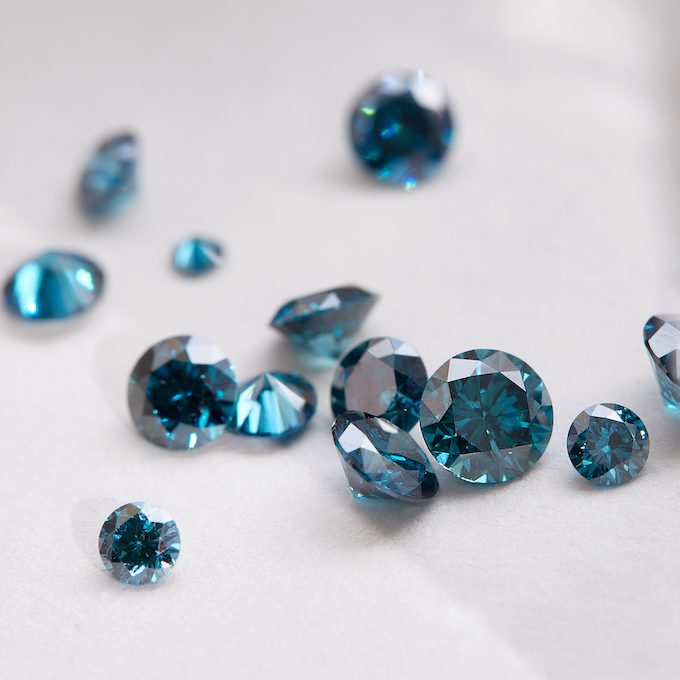 |
Pink diamonds
Diamonds in a delicate pink color lie at the very top of the diamond pyramid. They are among the rarest and like blue diamonds, they will only appreciate in price. Their largest deposit is in Australia and the Argyle mine where they are mined has just announced that it has now stopped production (in November 2020). The uniqueness of pink diamonds lies in the fact that their color is not caused by adding another element into the diamond’s structure but rather by a malformation in the crystal lattice of the diamond. As a result of the enormous temperatures and pressures that are essential for the formation of diamonds, in the case of pink diamonds, the carbons were pushed out of their natural place.
Green diamonds
Green diamonds are a very interesting investment because very few people own them. Green is a rare and very mysterious color and these diamonds are also unique in that their color is due to radioactive radiation that acted on the diamond over many millions of years. During radiation, the carbon atoms in the diamond moved from their natural place. As a result, the diamond absorbs and emits light in a different way and we perceive it as green. The longer the diamond was radiated, the more intense it is in color. But we don't have to worry, green diamonds are no longer radioactive. Another interesting feature of these diamonds is the way their origin and authenticity is verified. It is customary for the gem cutter to leave a small piece of the stone in its raw form - this is the only way to reliably determine that it is truly natural. Green diamonds can have several secondary colors and the most sought after is blue. A diamond with this resulting greenish blue (cyan) color is very rare.
One of the most famous green diamonds is the "Dresden Green Diamond" which weighs 41 carats (8.2 g). This unique piece is stored just a short distance from Prague, in one of the richest treasuries in Europe which is in Dresden.
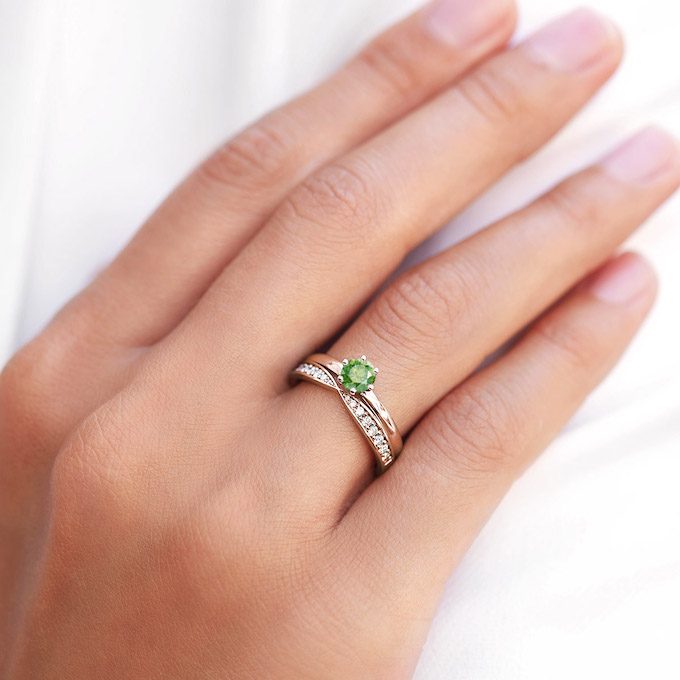 |
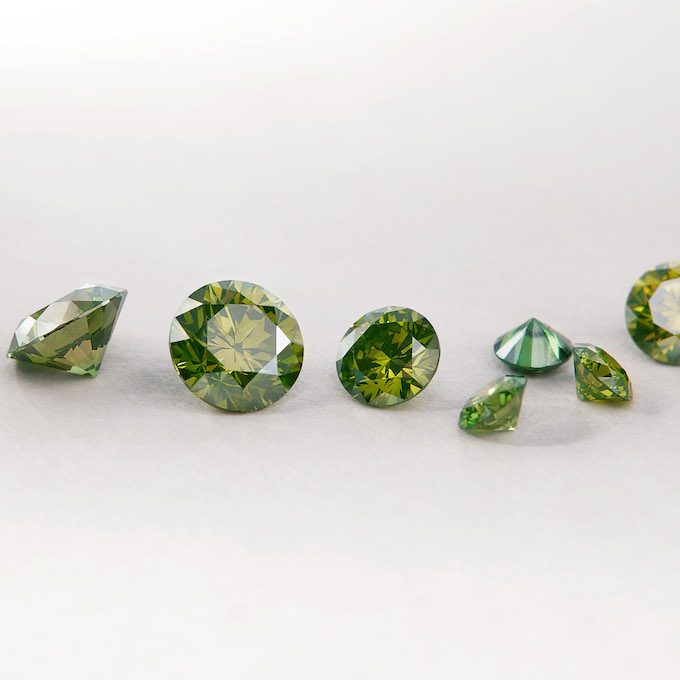 |
Yellow diamonds
Among fancy diamonds, those with a yellow color are considered quite common and unlike other rare shades, they are also used more often in jewelry making. They are sometimes sold under the name of Canary diamonds. Their color is due to the presence of nitrogen. The more nitrogen in the structure, the more intensely the diamonds will sparkle. And if the diamonds reach the category of Fancy Intense or Fancy Vivid, their prices rise sharply. Yellow diamonds are not as stable a commodity as their blue, pink and red cousins and in times of crisis, their prices have fallen.
Orange diamonds
Orange diamonds are called “pure” orange and this color was recognized by the GIA as a separate shade even though it is a combination of two primary colors, yellow and pink. Pure orange diamonds without any side shades are relatively rare and are valued almost as much as red ones. Diamonds in which one of the colors dominates are more common. We then call these pink-orange or yellow-orange diamonds. Nitrogen is also responsible for adding color to orange diamonds, however the difference is in the way the nitrogen atoms are arranged. In this case they absorb the blue and yellow components of light, thanks to which the diamonds acquire a specific orange color. Diamonds in these shades which are classified as Vivid and Deep have the highest value.
Violet and purple diamonds
There is a special category for purple and violet diamonds which are created through a combination of primary colors - blue and gray for violet diamonds and red and pink for purple. Pure violet diamonds are very rare in nature and are always smaller in size. This color is caused by the presence of hydrogen in the diamond structure but we don’t yet know exactly how the purple color occurs. Most of these diamonds come from the Argyle mine, which has now ceased production therefore their price is expected to rise. Purple is more of a secondary color, so pure purple diamonds are very rare. And even more valuable are purple diamonds where pink dominates. These usually don’t exceed two carat in weight. The task of the gem cutters in those instances is to save as much as possible from the diamond’s raw material which creates some non-traditional and interesting cuts.
Black diamonds
We also can’t forget about black or carbonado diamonds, although they differ from other diamonds in many ways. Initially they were used as an abrasive in industrial production but over time, their charm was also discovered by jewelers. But the term "diamond" in this case can be a bit misleading. Carbonado is a mixture of diamond, graphite and amorphous carbon and it is the graphite that is behind the black color. We admire them for their luxurious look and metallic luster. Unlike classic diamonds, they are never transparent.
Champagne diamonds
Jewelry with champagne colored diamonds also has a place in the KLENOTA jewelry studio’s collection. These delicate and elegant stones are actually brown diamonds with a yellow or orange shading. Their color can also be attributed to nitrogen. The more nitrogen in the diamond, the richer its color is. Brown diamonds can vary from a light shade to a very deep brown. Some levels of intensity have also found their own name, such as cognac or even chocolate diamonds and the “chocolate diamond” designation is registered under the Le Vian trademark. Brown diamonds are usually less rare and therefore cheaper than colorless diamonds. But everything depends on the tone of the color, the size, quality of the cut and on other factors. Champagne diamond production comes from Siberia, Africa and the Australian Argyle mine.
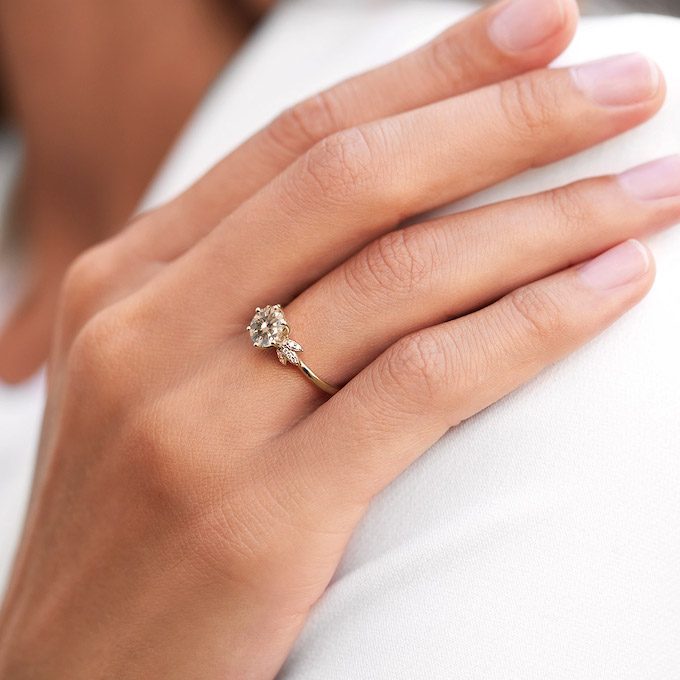 |
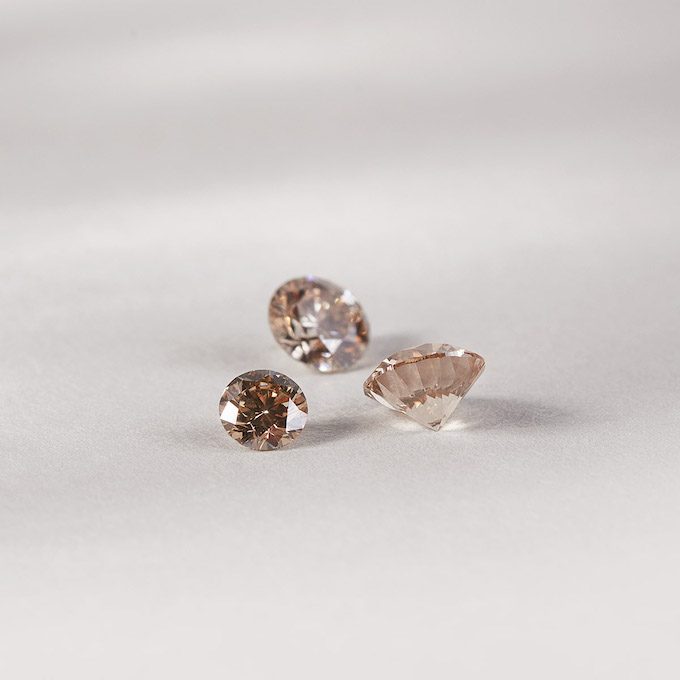 |
Why buy a piece of jewelry with a color diamond?
Do you love colors, but don't want to give up the durability and resilience that only a diamond excels at? Then you might just be won over by the magic of color diamonds. A colorless diamond is an absolute classic that does not age, but if you are looking for something truly unique then opt for a color one. Among the wide variety of shades, you’ll definitely find the one that will resonate with your personality. As a bonus, you can take into account the fact that a purchase of color diamonds can be viewed as an attractive investment for the future.
Color diamonds are also gaining in popularity as engagement rings. A combination of a creamy champagne diamond and rose gold is perfect for this occasion. Such a piece of jewelry looks delicate and can blend in perfectly with its wearer. And romantically inclined women will in turn no doubt be excited by a gold ring with a pink diamond in a round cut.
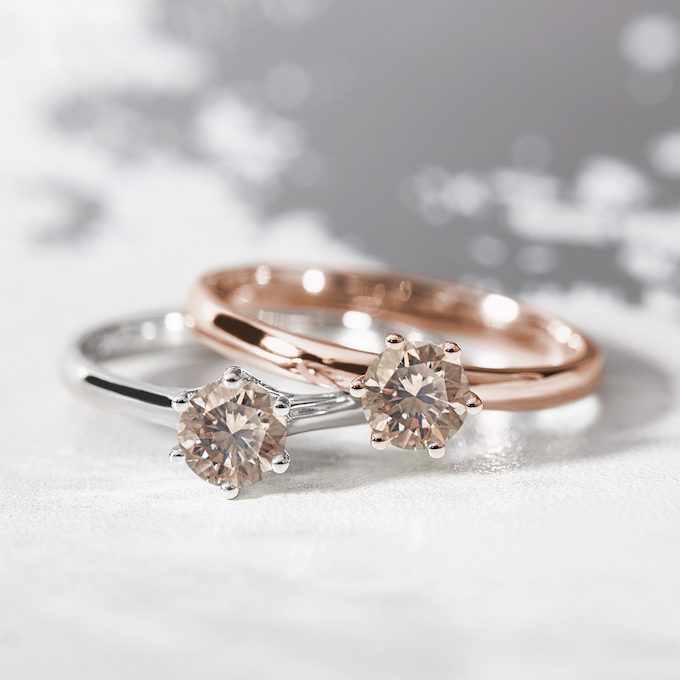
Jewelry with fancy diamonds can also be worn every day. Such pieces are suited to simple designs that will make their beauty stand out. For instance gold stud earrings with green diamonds. The combination of color and colorless diamonds also looks great. Proof of this is this diamond ring made of white gold.
For fans of a minimalist style, an ideal choice will be jewelry with black diamonds which, despite their big dose of elegance, look quite extravagant. A gold ring with black diamonds in a pave setting would be appreciated by women with refined tastes.
